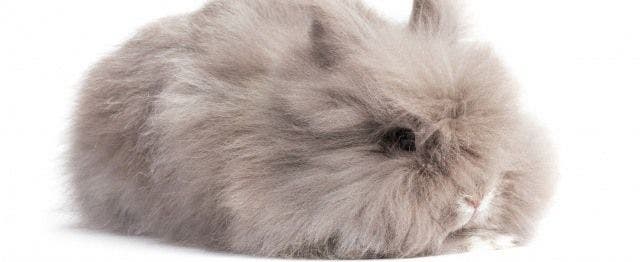
Choosing an Angora Rabbit
Because of its long luxurious coat, the Angora rabbit is a popular breed. Originally bred only for its wool, the Angora is now also bred for human companionship. Even though the Angora is an excellent pet, the wool can still be harvested, spun and woven without harming the rabbit, resulting in soft gorgeous blankets and clothing. In other words, you can have your Angora rabbit and wear it too!
However, their hair is a double-edged sword: they require frequent grooming and need to have hair removed every 3 months.
History and Origin
The origin of the Angora rabbit is unknown; some suspect that they originated in Ankara, Turkey, and were introduced to Europe in the early 1700s. Regardless of his original home, the Angora was finally exhibited for the first time in the United States in 1934.
Appearance
Presently, there are four separate breeds of Angora rabbits: English Angora, French Angora, Giant Angora and Satin Angora.
English Angora
The smallest of the four breeds, the English Angora, has a short, compact body, long and silky wool, with face furnishings and ear tassels. The mature weight ranges from 5 to 7 1/2 pounds. The English Angora tends to have a fine coat, so he needs frequent grooming. Because of the frequent handling and grooming of this breed, most English Angora rabbits tend to be very gentle and tame. There are many colors accepted, including but not limited to white, pointed white, black, blue, chocolate, lilac, chestnut agouti, fawn and tortoise shell. For showing, the rabbit must be a “solid” color.
French Angora
The second largest of the four breeds, the French Angora, has a medium length body, clear face and clean front feet. The mature weight range is 7 1/2 to 10 1/2 pounds. The French Angora has coarse guard hair to protrude above the underwool, and less grooming is needed. It is a breed for people who like to have long-haired animals but do not like to groom. French Angoras tend to be a little strong-willed. All the colors accepted in English Angora are accepted in the French Angora. In addition, the French Angora is also accepted in “broken” pattern, which means white combined with a different color.
Giant Angora
The Giant Angora is the largest of the four breeds. The body type should be medium to long with good height and width, with a minimum mature weight of 9 1/2 pounds and no upper weight limit. They tend to have a slower metabolism; the feed intake is less than proportional to their weight. The Giant Angoras tend not to release their wool, so it needs to be clipped. However, in between clipping or shearing, a Giant Angora still needs to be groomed. The only color accepted for showing is white with ruby eyes.
Satin Angora
The Satin Angora looks like a smaller version of a French Angora. It was originally developed by crossbreeding French Angora and Satin rabbits. The distinct characteristics are the sheen on the face and the wool. The mature weight should be between 6 1/2 pounds to 9 1/2 pounds. The Satin Angora’s wool has a finer diameter hair shaft than the wool of other Angora breeds, so it appears less dense. The Satin Angoras, especially juniors, need frequent grooming due to the fineness of the wool. The colors accepted are the same as English and French Angoras – all rabbits for show have to be a “solid” pattern. Due to the sheen factor, their colors tend to be more intense than other Angoras.
Feeding
Commercial rabbit pellets are recommended. Feed 1/4 cup of pellets per 5 pounds of body weight every day. For rabbits under 8 months of age, feed unlimited plain alfalfa pellets. Fresh rinsed greens, vegetables, and fruit, as well as grains and hay, can then be given as supplements. Free choice hay, such as timothy, should always be available and changed daily, but alfalfa hay should not be offered free choice to rabbits over 8 months of age. It is too rich.
Housing
Many rabbits do very well in the home. They can be litter box trained and are quite fastidious groomers. Be aware that rabbits love to chew so make sure all wires are safely hidden or in protective plastic covers and understand that some of your furniture may be nibbled. If you choose to cage your rabbit, make sure the cage is at least 2 feet by 2 feet by 4 feet. If the cage has a wire bottom make certain you give the rabbit a plank or sea grass mats to stand on so his feet won’t get damaged from being on the wire all the time. Provide a hide box or shelter and plenty of straw for bedding.
Health Concerns
As with other rabbits, Angoras do not do well in high or low temperatures. They are prone to hairball obstructions and matted coats if not cared for properly. Rabbits need daily grooming to remove loose hair. Other health concerns include earmites, Pasteurella, respiratory disease, dental problems, urinary bladder stones and fractured backs. Be quick to notice any changes in diet or litter box habits and contact a rabbit veterinarian immediately.
The average life span of a breeding Angora rabbit is 5 to 6 years. If you decide to have your Angora as a pet, by spaying or neutering, you can increase their life expectancy to around 10 years!